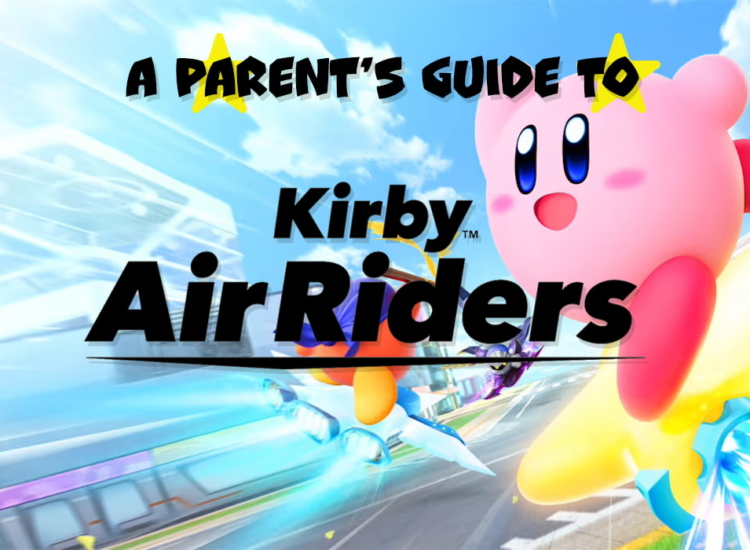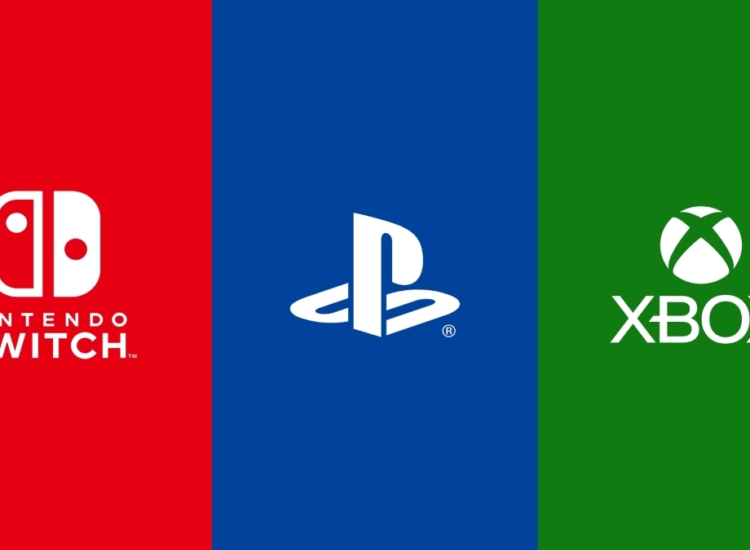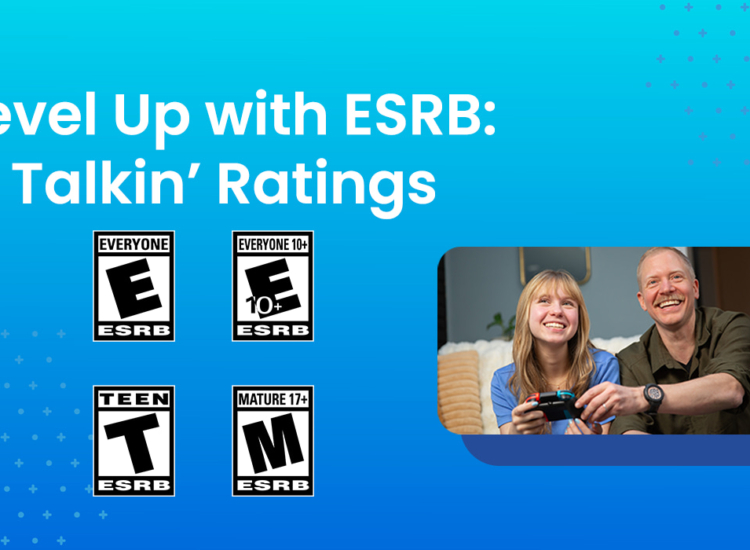A Parent’s Guide To Pokémon Legends Z-A

As ESRB’s resident certified* Pokémon Master I feel that it is my job… nay… my moral obligation to provide expert information on Pokémon Legends Z-A. As a parent you’re probably already familiar with the world of Pokémon, but the Legends moniker is reserved for more experimental spinoffs compared to the core, mainline games (like Scarlet and Violet).
Pokémon Legends Z-A mixes up the structure of the Pokémon series, as well as the battle system. While it still maintains what you probably expect to see from a Pokémon game (catching, battling, and exploring), there are wrinkles that may impact how much fun you and your kids may have with this new iteration.
*Again… this title is unofficial and self-applied. I still maintain that some official certification process should exist.
What is Pokémon Legends Z-A Rated?
Pokémon Legends Z-A is rated E10+ for Everyone 10+ with a Content Descriptor for Fantasy Violence and an Interactive Element for In-Game Purchases.
According to the Rating Summary, “Battles are frenetic and accompanied by impact sounds, grunts of pain, and large colorful explosions. In some sequences players can encounter and battle larger boss Pokémon with more protracted combat.”
Pokémon Legends Z-A is rated E10+ for Everyone 10+.
While Pokémon Legends Z-A is rated E10+, the game itself has a more complex battle system than previous Pokémon games. So even though the game is appropriate for kids aged 10 and older, and many will probably have no problem navigating the controls, some kids may still have trouble wrapping their heads around the battling in this one.
Where Can I Play Pokémon Legends Z-A and How Much Does It Cost?
Pokémon Legends Z-A is available on the Nintendo Switch and Nintendo Switch 2 consoles. The Nintendo Switch version costs $59.99, while Pokémon Legends Z-A – Nintendo Switch 2 Edition costs $69.99.
But what if you have a Switch now, but plan to get a Switch 2 in the future? The Switch version will play on the Switch 2 without any extra steps, but there’s also an Upgrade Pack you can purchase on the Nintendo eShop for $9.99. This will upgrade your Switch version to the Nintendo Switch 2 Edition. Functionally, the versions are identical in terms of content, but the Nintendo Switch 2 Edition will leverage the increased power of the Nintendo Switch 2 to offer better visuals.

Map of Lumiose City.
Keep in mind that the rating does include an Interactive Element for In-Game Purchases, meaning the game may offer the ability to spend real world currency on additional content. You can set parental controls on your family’s Nintendo Switch or Switch 2 consoles to manage spending.
What is Pokémon Legends Z-A About?
Pokémon Legends Z-A is a sort-of continuation of Pokémon X and Pokémon Y from 2013. Z-A takes place entirely in Lumiose City – a facsimile of Paris in the world of Pokémon and a major location in Pokémon X and Y. While there seem to be story threads that have hooks in the 12-year-old 3DS games, fear not: You don’t need to know the ins and outs of the story to jump into Z-A.
Unlike many Pokémon games where you start in a small, semi-isolated town, you’re dropped into Lumiose City amid a city-wide infrastructure upgrade (helmed by Quasartico Inc., of course) aiming to shape it into a city that serves humans and Pokémon equally. (As a New Yorker I would like to see how the local government got this massive initiative off the ground with Quasartico. Did they just privatize the entire city or something? It all seems very complicated.)
Anywho…. You and your kids will step into the shoes of an aspiring Pokémon trainer visiting Lumiose City! During your stay at Hotel Z, you’re pulled into Team MZ, a local group of citizens with the goal of protecting the city. You’ll also participate in the Z-A Royale, a city-wide battling initiative for Pokémon trainers. During the event you’ll climb from Rank Z to Rank A to become the strongest trainer in Lumiose City and earn a vague reward of a wish.
Along the way you’ll make friends, solve mysteries, and capture Pokémon all over the city.
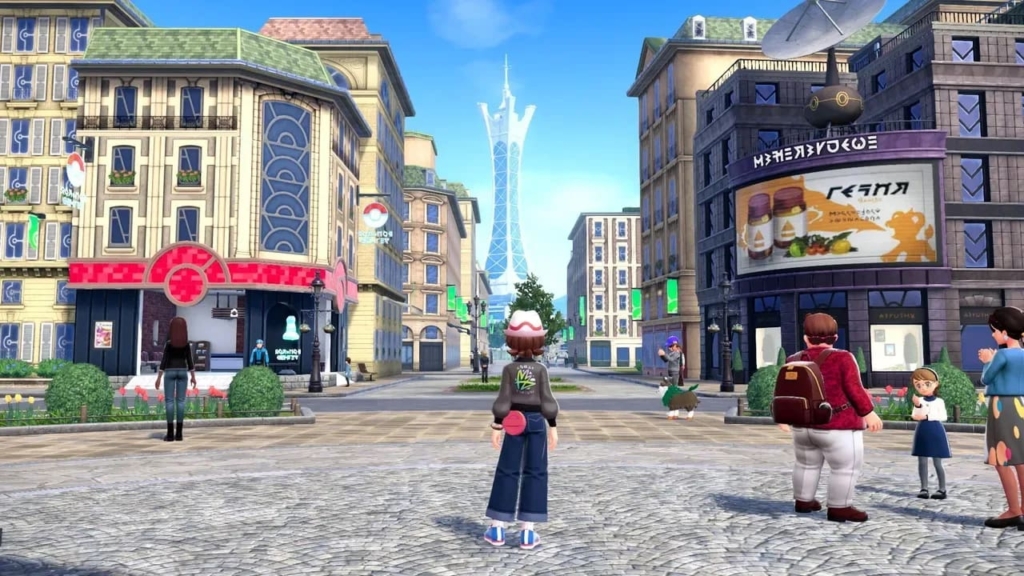
Meanwhile… something fishy is going on in Lumiose amid the redevelopment; Pokémon are spontaneously Mega Evolving! For reference, Mega Evolution is a temporary power up for some Pokémon that requires their trainer to be in possession of specific items. However, this phenomenon, dubbed Rogue Mega Evolution, is causing wild Pokémon to randomly Mega Evolve and run amok!
How Does Pokémon Legends Z-A Play?
Pokémon Legends Z-A retains many of the tried-and-true mechanics that Pokémon games have had for almost 30 years (oh man… that hurt to write), while adding some twists to the formula. Let’s break it down to what I consider the three primary elements of Pokémon games.
Exploration
Every Pokémon game encourages players to explore the region. Usually, these take the form of an entire continent, complete with small towns, cities, caves, ruins, and more. Pokémon Legends Z-A, however, is the first Pokémon game that takes place entirely in one, dense city. The Lumiose City of Pokémon Legends Z-A contains the streets, alleys, and sites you’d expect from any modern city. You can even get new clothes, take photos, visit shops, and more. Lumiose also includes specific areas called “wild zones.” These designated areas contain habitats for wild Pokémon that you and your kids can battle and catch (more on that soon).
The game is broken into day and night cycles. During the day you and your kids can freely explore the streets of Lumiose, catch Pokémon, and take on side stories to help citizens. But when night descends on Lumiose the Z-A Royale takes center stage. Red gates appear around the city, and after passing through you’ll be taking part in fast paced Pokémon battles.
Battling
The biggest change in Pokémon Legends Z-A is introduced with battling. Pokémon Legends Z-A is the first Pokémon game with “real-time battles.” For comparison, past Pokémon RPGs have “turn-based” battle systems. This means Pokémon literally take turns executing commands (depending upon the Speed stat of the Pokémon in question). Turn-based battling allows players to take as much time as they need to contemplate strategy and choose the most effective move for a given situation.
Real-time battling removes that downtime, meaning the player must adapt on the fly to direct their Pokémon. This change introduces some other strategic considerations.
Instead of picking your Pokémon’s attacks from a menu, the four moves will be mapped to the A, B, X, and Y buttons. These will all have different cooldowns (i.e., timers), so knowing when to use a certain move based on how long it takes to recharge becomes key.
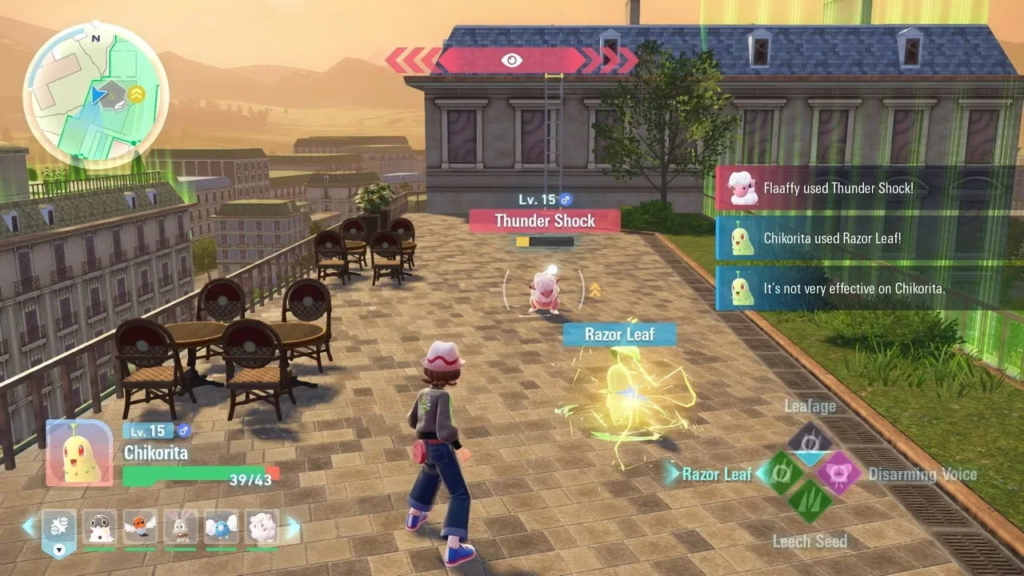
For the first time, positioning also becomes important. In past games this did not enter into the equation at all, but in Pokémon Legends: Z-A you have the ability to tell your Pokémon where to stand, which may help them avoid their opponents attacks. You and your kids will also need to move your player character around the battle space so you don’t get caught in the crossfire and pass out.
During the Z-A Royale, trainers will dot the streets and alleys of the battle zones. Starting at Rank Z, you’ll be on a mission to rise through the ranks up to A. this all starts with winning regular battles to earn “Ticket Points.” Getting enough Ticket Points will yield a Challenger’s Ticket and entitle you and your kids to challenge powerful new trainers in Promotional Matches and rise through the ranks.
Meanwhile, the aforementioned Rogue Mega Evolutions offer another challenge analogous to boss fights. Rogue Mega Evolved Pokémon will have specific moves, tells, and weaknesses for you and your family to learn and overcome.
Catching
Gotta catch ‘em all, am I right?
What Pokémon game would be complete without collecting some new little critters? Wild Pokémon roam the streets of Lumiose City, while the wild zones house many more potential friends to catch.
Unlike many core Pokémon games, you do not have to battle a wild Pokémon to catch it. In Pokémon Legends Z-A you have the option to sneak up on wild Pokémon and throw a Pokéball of your choice to capture a new buddy and fill out your Pokédex. Of course, for a stronger Pokémon this may not work and you’ll need to weaken them first. For the first time, defeating a wild Pokémon will not cause it to faint. Instead, it will become temporarily dazed, increasing the chances of capture for a limited period of time. Filling out the Pokédex benefits you and your family’s relationship with the Pokémon Research Lab, which will reward you for continuing to discover more new species of Pokémon.
Become a Master of Appropriate Video Game Experiences
Every parent wants to be the very best… like no one ever was. Especially when it comes to making sure your little trainers are having appropriate experiences while playing video games. Fortunately, there are resources at your disposal to Mega Evolve what you can do to make sure your kids are having nothing but fun.
Checking the ratings is always great, but if you need (or just want) more information make sure you check out trailers, previews, and reviews. It’s a great next step to understanding what’s in a game before you buy it. Of course… playing a game is almost always the most surefire way to see what a game has to offer.
Staying involved is Super Effective! Start by nurturing an open-ended conversation with your kids about video games. Approach this from a judgement-free position and you may be surprised that your kids’ favorite games are offering more than having a good time. Visit ESRB’s Family Gaming Guide for tips to help guide your conversations. This can also lead to a mutual understanding of the importance of establishing household rules around concepts like spending, online communications, and screen time. The importance of this cannot be understated.
Staying involved is Super Effective!
For example, when Pokémon Silver came out, we did not have household rules around screen time in our home. Granted, this was in 2000, before the time of comprehensive parental controls. On a recent family vacation, I – a 36-year-old man with a wife, child, and job – confessed to my mom that 11-year-old Max would often say goodnight, turn off the lights, and hide with a flashlight under my blanket to play Pokémon Silver until like… 3AM. She responded by burying her head in her hands and saying, “Oh… Oh Max, no….”
For the record: My mom was incredibly patient and involved during my childhood! She was there for all the important stuff, and most of the unimportant stuff, too. And while she understood that I loved video games, she didn’t have a great understanding at that time of why they were so important to me and how to best manage them.
So don’t get tricked by the Gameboy-obsessed logic of an 11-year-old. Establish and explain those household rules and then set parental controls to back them up. That way, if your 11-year-old tries to pull a similar stunt, they’ll know it’s against the rules and you can remotely deactivate the console the second it’s time for bed.
In fact, parental controls can do more than just manage when and for how long your kids can play games. In addition to screen time, you can manage what your kids play based on the ESRB-assigned rating information, with whom, and whether they can spend money on new games or in-game purchases! ESRB has step-by-step parental controls guides at ParentalTools.org to help you get started.
At the end of the day Pokémon continues to be a special series for me, personally (in case that wasn’t clear). Like millions of other people, I’ve been playing this series for most of my life. And something I always highlight is the long-running theme of altruism and friendship in Pokémon games. Beyond the core content of the game, I’ve personally always found it refreshing that being a decent person and helping others is regularly rewarded throughout the entire Pokémon series. Committing good deeds always benefits you, and those in the world that are misguided, selfish, or cruel always lose – even if they think it’s for the right reasons. Helping others and treating living things with dignity and respect are frequently elevated as plot points. Even when it comes to battling players are rewarded for healing their Pokémon, making sure they don’t faint (i.e., run out of hit points, or HP for short), and playing with them outside of battle. While the theme of kindness is often simplified, and there are rarely shades of grey, it’s an important skill to learn that doing the kind thing is sometimes challenging, but often worth it. It’s something I aspire to help my one-year-old understand as he grows. Someday soon, I hope we can share the experience of catching, battling, and exploring Pokémon games.
